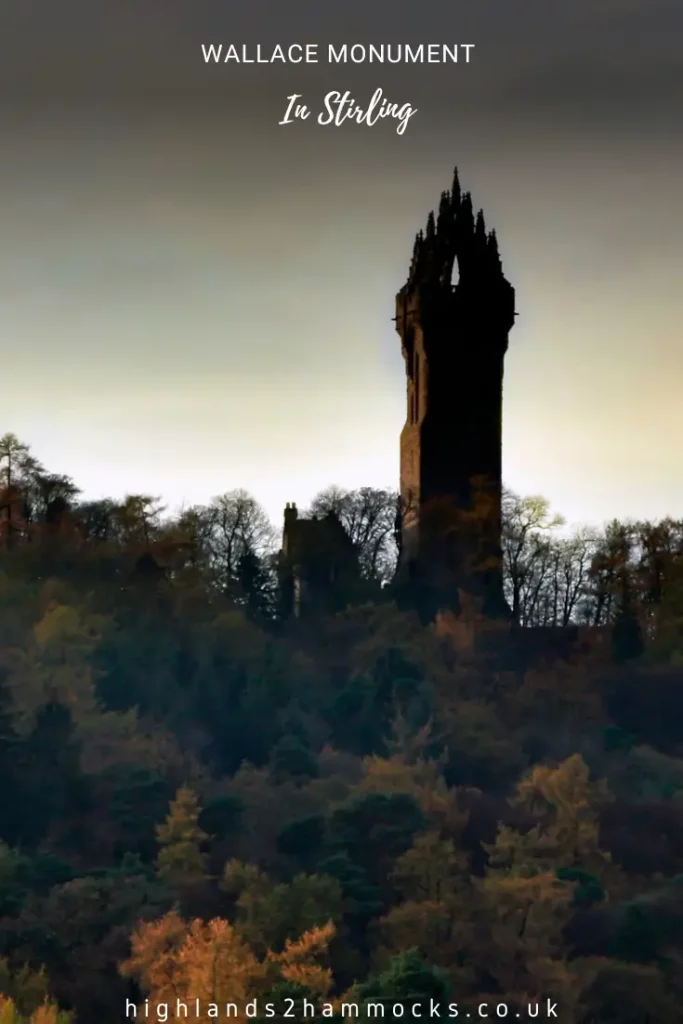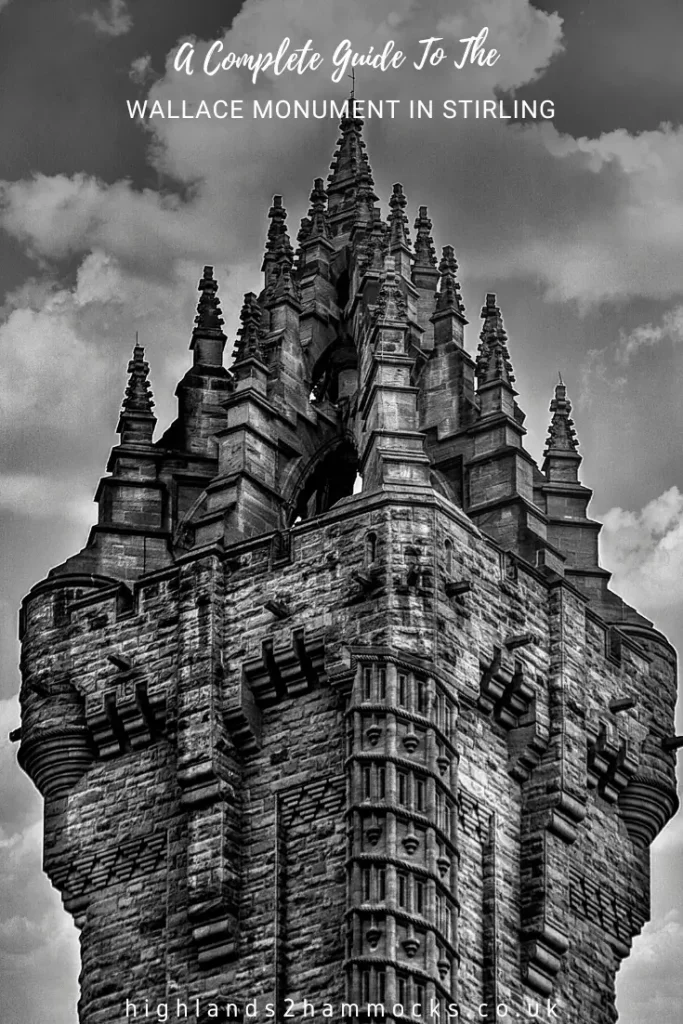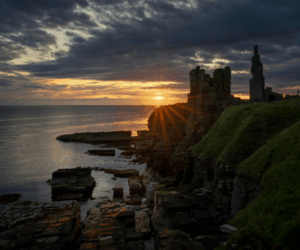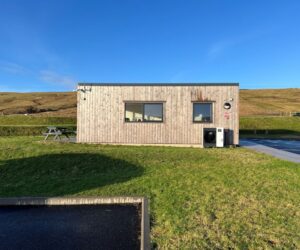Stirling is a small city in central Scotland, located approximately 40 miles west of Edinburgh and 30 miles northeast of Glasgow. Known as the “Gateway to the Highlands,” Stirling is a historic city with a rich cultural heritage and stunning natural scenery. With its cobbled streets, grand castle, and quaint shops and cafes, Stirling offers visitors a taste of Scotland’s past and present.
One of the city’s main attractions is Stirling Castle, a well-preserved fortress perched atop a hill that dominates the skyline. The castle has a rich and varied history, having served as a royal residence, a military stronghold, and a prison. Visitors can take a guided tour of the castle’s grand halls and chambers, see the Great Hall where banquets were held, and view the crown jewels of Scotland.
Another iconic and attention-grabbing landmark in Stirling is the Wallace Monument, a towering structure that commemorates the life and legacy of Sir William Wallace, one of Scotland’s greatest heroes who fought for the country’s independence against the English in the late 13th century. The monument stands on the Abbey Craig, a hill overlooking Stirling, and offers stunning views of the city and the surrounding countryside.
In this blog, we will take a closer look at the Wallace Monument In Stirling and what you can expect when you visit.
No time to read now? No problem, save a pin to your Pinterest board for later!
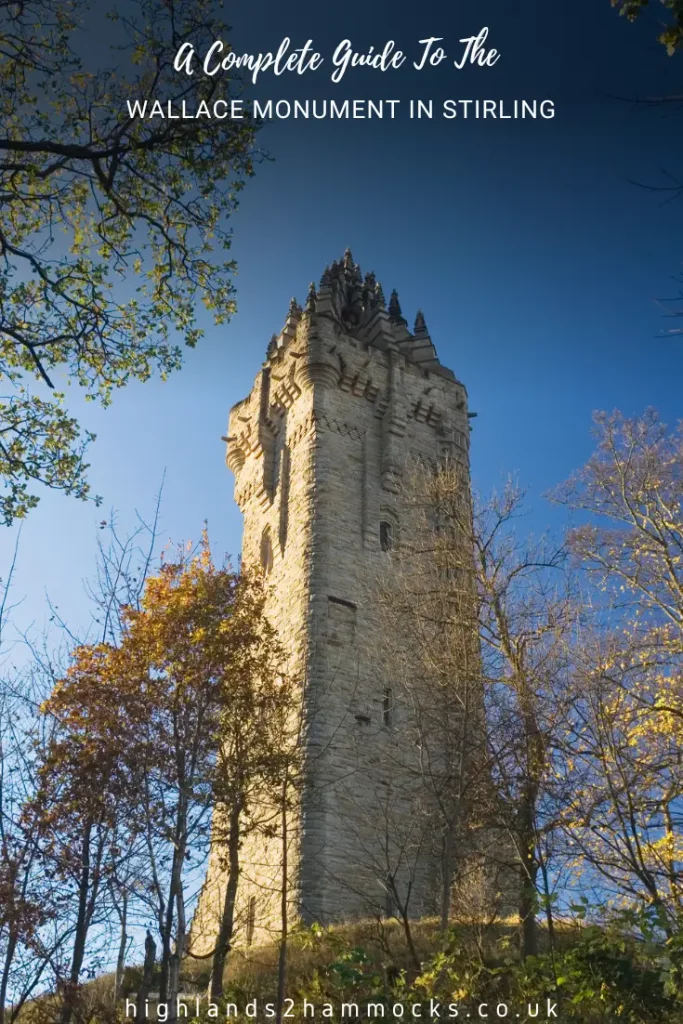
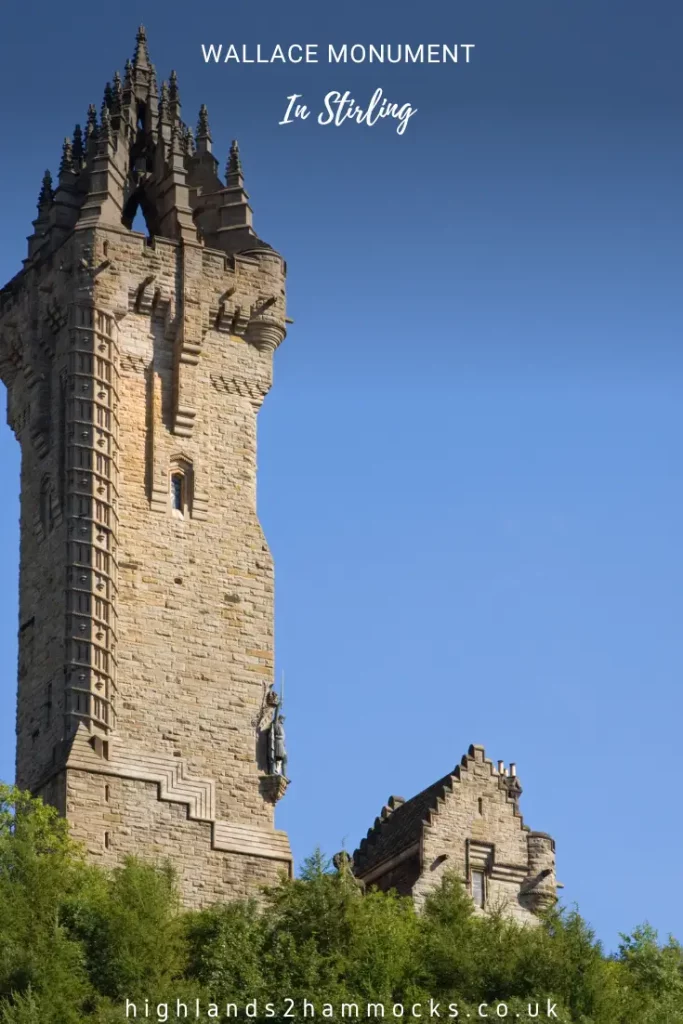
Guide To The Wallace Monument In Stirling
Table of Contents
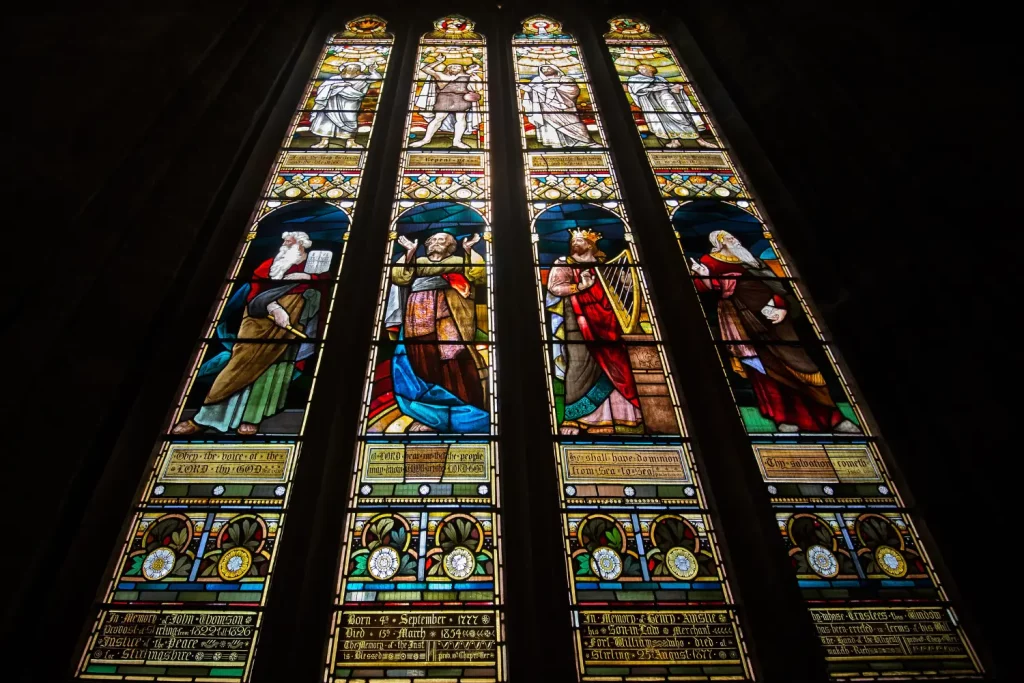
Planning Your Trip
We use the below booking platforms to plan our trips. We hope you find them useful too!
The History of the Wallace Monument
The Wallace Monument In Stirling is a towering structure that stands on the Abbey Craig, a hill overlooking the city of Stirling in central Scotland. This historical monument has an interesting legend associated with it. The monument was built in the 19th century to commemorate the life and legacy of Sir William Wallace, a Scottish hero who fought for his country’s independence against the English in the late 13th century.
The idea for the monument was first proposed in 1810 by a group of local businessmen and politicians who wanted to create a lasting tribute to Wallace and his contribution to Scottish history. However, it took over 40 years for the monument to be completed, due in part to a lack of funding and political opposition.
The monument was finally completed in 1869, and has since become one of Scotland’s most iconic landmarks. It stands over 220 feet tall, and is made of sandstone and marble. The monument’s design was inspired by Gothic architecture, and features intricate carvings and sculptures that depict scenes from Wallace’s life and the history of Scotland.
Visitors to the monument can climb a spiral staircase to the top of the tower, where they can enjoy stunning views of the surrounding countryside. Along the way, they can also explore a series of exhibitions and displays that tell the story of Wallace’s life and legacy, as well as the history of Scotland and its struggle for independence.
Today, the Wallace Monument is a symbol of Scottish pride and identity, and a powerful reminder of the country’s rich cultural heritage. It continues to attract visitors from around the world who come to learn about Sir William Wallace and the history of Scotland, and to experience the monument’s awe-inspiring beauty and significance.
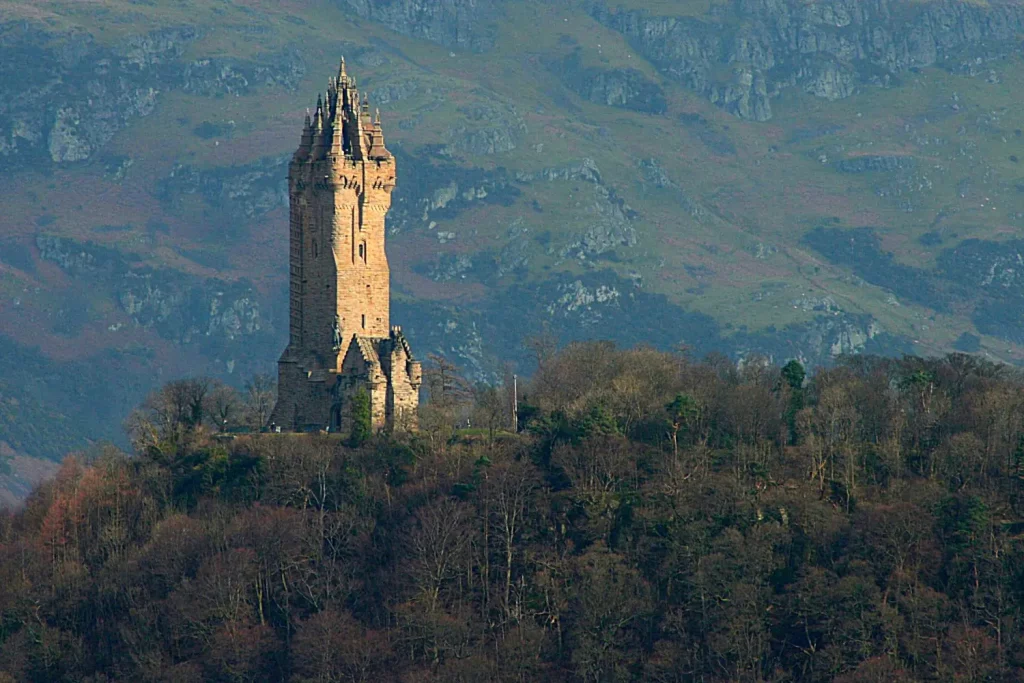
The Wallace Monument Today
Today, the Wallace Monument is one of Stirling’s most popular tourist attractions. Visitors can climb to the top of the tower to enjoy stunning views of the surrounding countryside. Along the way, you will also learn more about Wallace’s life and legacy.
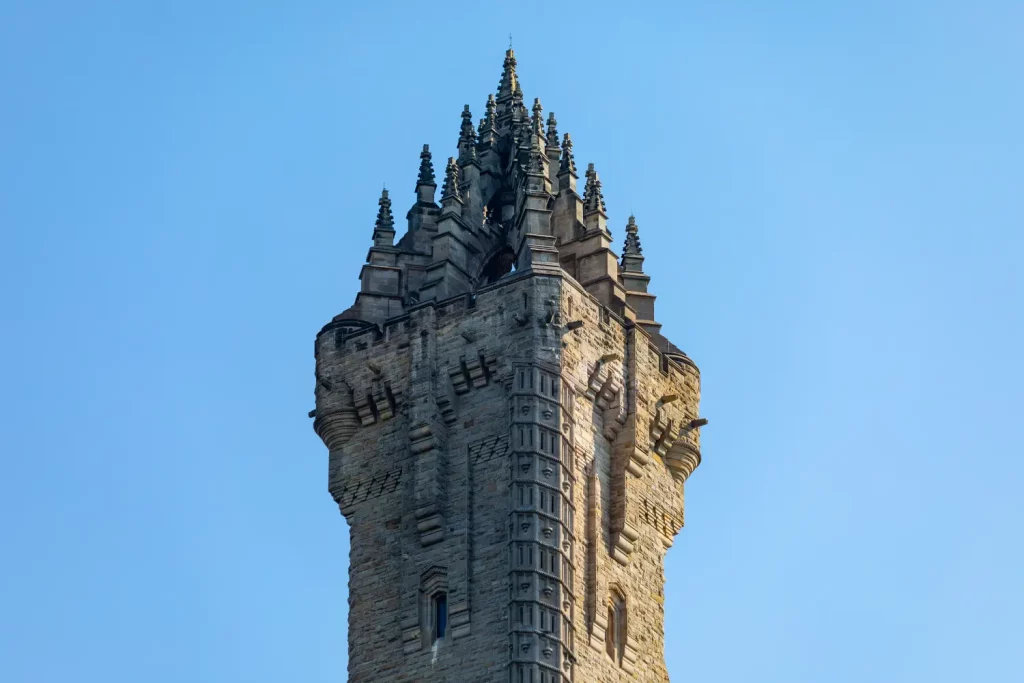
Are you planning to visit more of Scotland on your trip? Why not check out our books to help you plan your trip?
Admission
Admission to the Wallace Monument is £12.50 for adults and £7.50 for children. There are also discounts available for seniors, students, and families.
The admission fee includes access to all areas of the monument, including the exhibition galleries and the Crown.
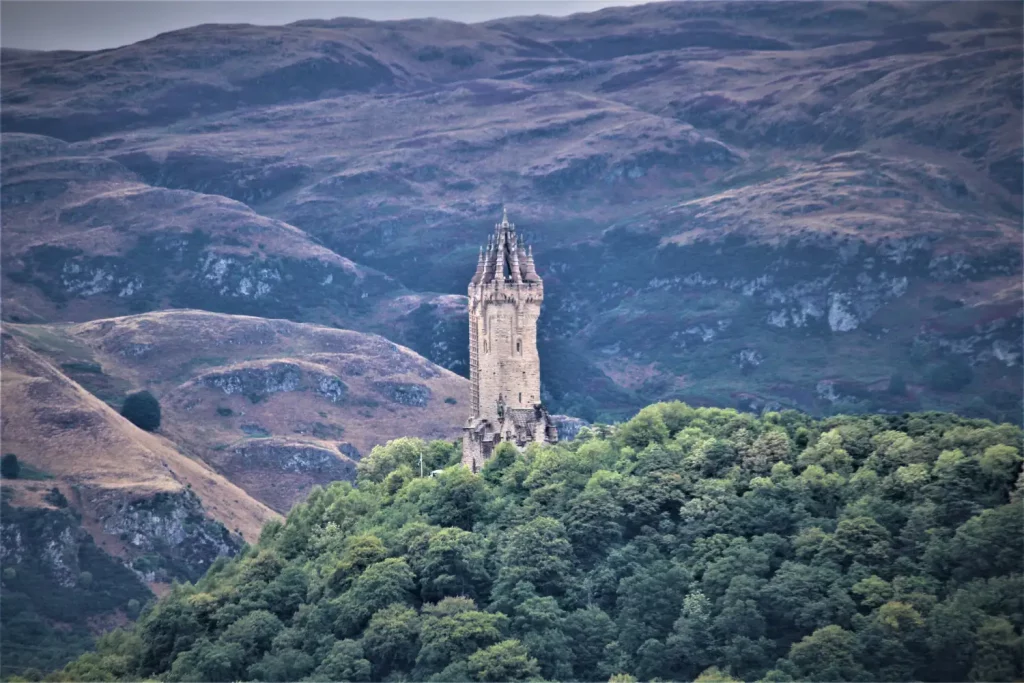
The Exhibition Galleries
The Exhibition Galleries at the Wallace Monument in Stirling offer visitors a fascinating and immersive experience, bringing the history and legend of Sir William Wallace and Scotland to life. The galleries are located on the ground floor of the monument and offer a range of exhibits and interactive displays that tell the story of Wallace’s life and legacy, as well as the history of Scotland and its struggle for independence.
The first gallery, entitled “Wallace’s Life and Times,” provides an overview of the key events in Wallace’s life, from his early years as a young nobleman to his famous battles against the English. The gallery features a range of artefacts, including weapons, armour, and personal items that belonged to Wallace and his contemporaries.
The second gallery, “The Battle of Stirling Bridge,” focuses on one of Wallace’s most famous victories against the English. The gallery features an interactive display that allows visitors to experience the battle first-hand, using sound and visual effects to recreate the chaos and intensity of the fight.
The third gallery, “The Battle of Falkirk,” explores the aftermath of the Battle of Stirling Bridge and the challenges that Wallace and his army faced in their continued fight for independence. The gallery features a range of artefacts and displays, including a replica of the English cavalry that Wallace’s forces faced at Falkirk.
The final gallery, “The Legacy of Wallace,” explores the enduring legacy of Wallace and his impact on Scottish culture and identity. The gallery features a range of exhibits and displays, including a film that explores the many ways in which Wallace has been celebrated and memorialized throughout Scottish history.
In addition to the exhibition galleries, the Wallace Monument also offers a range of other attractions and experiences for visitors. These include a climb to the top of the monument for stunning views of the surrounding countryside, as well as a visit to the monument’s gift shop and café.
Overall, the Exhibition Galleries at the Wallace Monument offer a rich and immersive experience that is both entertaining and educational. They provide visitors with a unique insight into the history and culture of Scotland and a deeper understanding of the life and legacy of Sir William Wallace.
Also read: Day trips from Glasgow and Day trips from Edinburgh
The Crown
The Crown at the Wallace Monument is an iconic and historic artefact that is closely tied to the story of Sir William Wallace and his fight for Scottish independence. The Crown is a replica of the original Scottish Crown, which was destroyed during the Wars of Independence in the 14th century.
The replica Crown was created in the early 19th century and was originally intended to be worn by King George IV during his visit to Scotland in 1822. However, it was eventually presented to the Wallace Monument in Stirling as a symbol of Scotland’s national identity and pride.
The Crown is displayed in a special exhibition at the Wallace Monument, where visitors can view it up close and learn about its history and significance. The exhibition tells the story of the Crown and its importance to Scottish culture and identity and offers insight into the history of the Scottish monarchy and the country’s long struggle for independence.
Visitors to the Wallace Monument can also climb to the top of the tower to enjoy stunning views of the surrounding countryside and learn about Sir William Wallace’s life and legacy through a variety of exhibits and interactive displays.
For those interested in Scottish history and culture, the Crown at the Wallace Monument is a must-see attraction. Its connection to Scottish identity and pride, as well as its association with Sir William Wallace and Scotland’s fight for independence, make it a powerful symbol of the country’s rich cultural heritage. Visitors to Stirling should make a point to visit the Wallace Monument and see the Crown for themselves.

The Wallace Sword
The Wallace Sword is one of Scotland’s most iconic historical artefacts and a must-see for visitors to Stirling. This impressive weapon belonged to Sir William Wallace, the Scottish warrior who fought for his country’s independence against the English in the late 13th century.
The sword measures over five feet in length and is said to have been wielded by Wallace himself in battles against the English. The sword’s intricate design features ornate carvings and symbols that are believed to represent Wallace’s courage and patriotism.
The sword is currently on display at the National Wallace Monument, which is located on Abbey Craig, a hill overlooking Stirling. The monument’s museum houses a wide range of artefacts related to Wallace’s life and legacy, including armour, weapons, and personal items.
Visitors to the monument can view the sword up close and learn about its significance in Scottish history. The monument’s knowledgeable staff can provide insight into the sword’s design and construction, as well as its place in Scottish folklore and legend.
For those interested in Scottish history and culture, the Wallace Sword is a must-see attraction. Its impressive size and intricate design make it a striking example of medieval weaponry, while its connection to Wallace and Scotland’s fight for independence adds to its cultural significance. Visitors to Stirling should make a point to visit the National Wallace Monument and see the sword for themselves.
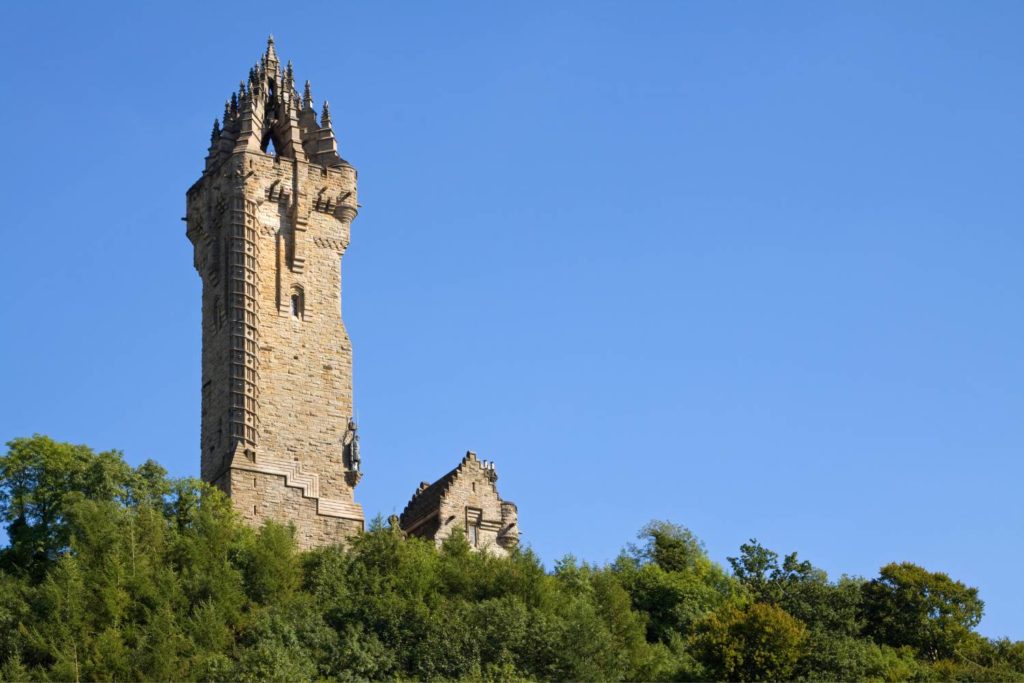
Before You Leave for Stirling
Before you set off on your way to Stirling, there are a number of things you will need to get organised to ensure a smooth and enjoyable journey. These include what to pack, where to stay and what is the best insurance for your trip to Scotland. All of this is discussed in detail below.
How to Get to Stirling
When you arrive in Stirling, you will most likely arrive at one of the two main train stations, the bus station or the airport. If you are wanting to explore the city centre sights, such as the Royal Mile, Edinburgh Castle, and the Princes Street shops, then Waverley is the best train station for you. The Edinburgh Bus station also sits just behind Princes St, so it is perfect for arriving into the city.
Haymarket Station sits slightly further from the city centre, and the airport itself even further out of the city, however, there is a very simple and reliable tram system that runs around the city. You can catch a tram from Edinburgh Airport directly into the city centre, passing through Haymarket, in just 35-minutes.
For this itinerary, any of these options will be fine for getting you into the city centre, however, most of the sights are based around the castle so Edinburgh Waverly or the bus station are the closest stations.

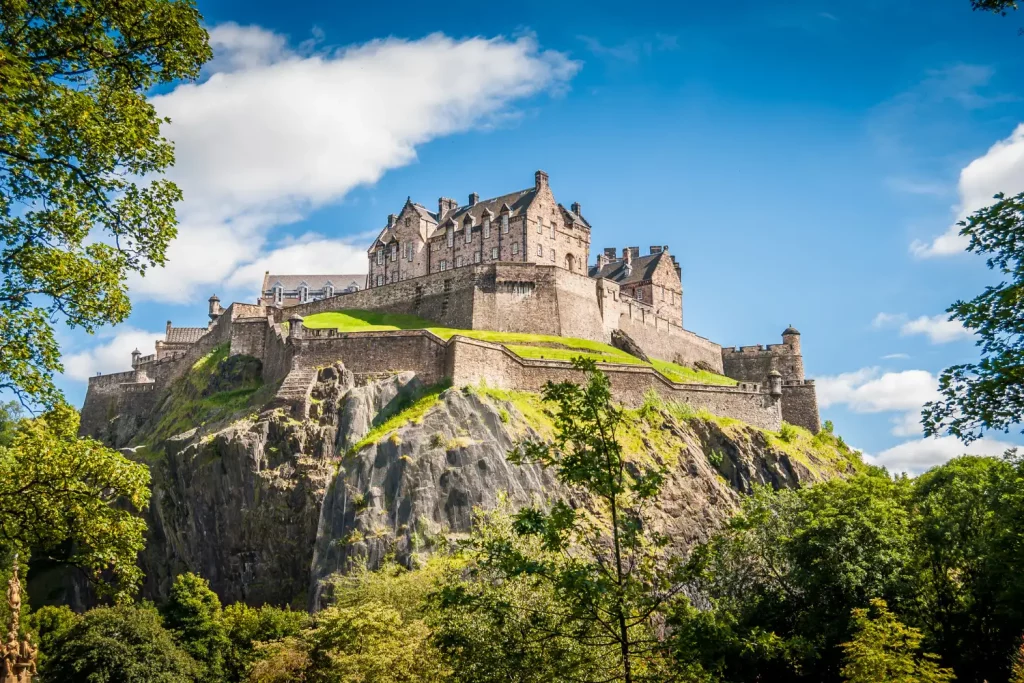
What to Pack for Your Trip to Stirling
When it comes to packing for a trip to Scotland there is one item of clothing that you are going to need all year round: a waterproof. It rains in Scotland on average 250 days a year, meaning that during your trip to the Isle of Skye, you can expect rain at some point. Due to this, the number one item on your packing list is a good waterproof jacket.
Second to that, another item to not leave home without is a good pair of warm and, if possible, waterproof boots. A lot of the best sights on Skye require a bit of walking to reach them and the conditions underfoot can become very muddy. You do not want to ruin a good pair of white trainers so pack some sturdy boots.
You will definitely need a hat and gloves during the winter months as the wind chill can be bitter.
Given the beautiful sights and scenery that you are no doubt going to see around the Edinburgh, we highly recommend packing a good camera for your trip. If you want to read more about the cameras we use and why we love them, check out the link below.
You can read what else we keep in our camera bag over here.
Photography Equipment
Main Photography Camera – Sony A7v Mirrorless Camera and Sony A7iii Mirrorless Camera
Microphone – Sony Mic ECM-B1M
Main Lens – Tamron 17-28mm f/2.8
Zoom Lens – Tamron 70-180mm f/2.8
Camera Tripod – ZOMEI Z669C Camera Tripod
Gorilla Pod – JOBY JB01507-BWW GorillaPod
Action Camera – GoPro Hero 11 and Insta 360 One RS
Drone Camera – DJI Mavic Pro 3
Camera Bag – Wandrd PRVKE 41L and The Nest by Tropicfeel
Phone Tripod – Manfrotto MKPIXICLAMP-BK, Mini Tripod with Universal Smartphone Clamp
Sturdy Phone Tripod & Selfie Stick – ATUMTEK 61″ Selfie Stick Tripod, Sturdy Phone Tripod Stand with Wireless Remote
Hard Drives – LaCie Rugged Mini, 5TB, 2.5″, Portable External Hard Drive
SSD – SanDisk Extreme Pro 1TB Portable NVMe SSD
Travel Adapter –Worldwide Travel Adapter Universal Travel Plug with 4 USB Ports+Universal AC Socke
What is the Best Travel Insurance for Stirling
I know travel insurance is the least enjoyable thing to purchase and look at when you’re planning a trip, however, you wouldn’t want to be without it in the event that something happened. Accidents can happen anywhere and the extortionate medical bills will ruin your trip if you are not covered.
To ensure you have a stress-free trip with no worries about potential medical bills, make sure you cover yourself when you travel. We can recommend using SafetyWing, a backpacker-friendly and cheap insurance company that provides good coverage and support. It is also nomad-friendly, unlike most other insurance companies, meaning you do not need to worry about being out of your home country for too long.
Get a quote for your travel insurance right here and get covered!

So there you have it, your guide to visiting the Wallace Monument. If you are visiting this incredible city and have any other questions on what to expect, leave us a comment down below. We love to chat about this stuff! If you have already been, let us know how it was! Did you manage the trip without getting caught in the rain? Let us know in the comments below!
Also, remember to share this with your friends and family that you are going to share this amazing experience with. Sharing is caring and we want to ensure that everyone is fully prepared to maximise their experience visiting Stirling.
If you are planning a Scotland trip soon then check out our other Scotland content right here. Come and find us on social media to see where we are currently exploring. Tag us in your photos from your stay and we will share them with the rest of our community of explorers and backpackers.
Read Now:
- The Best Day Trips From Glasgow
- Day Trips From Edinburgh – A Comprehensive Guide
- 10-Day Scotland Road Trip Itinerary – Edinburgh, Glasgow and Isle of Skye
This article may contain affiliate links that provide us with a small income. For more information read our Affiliate page.
Pin it for later!
